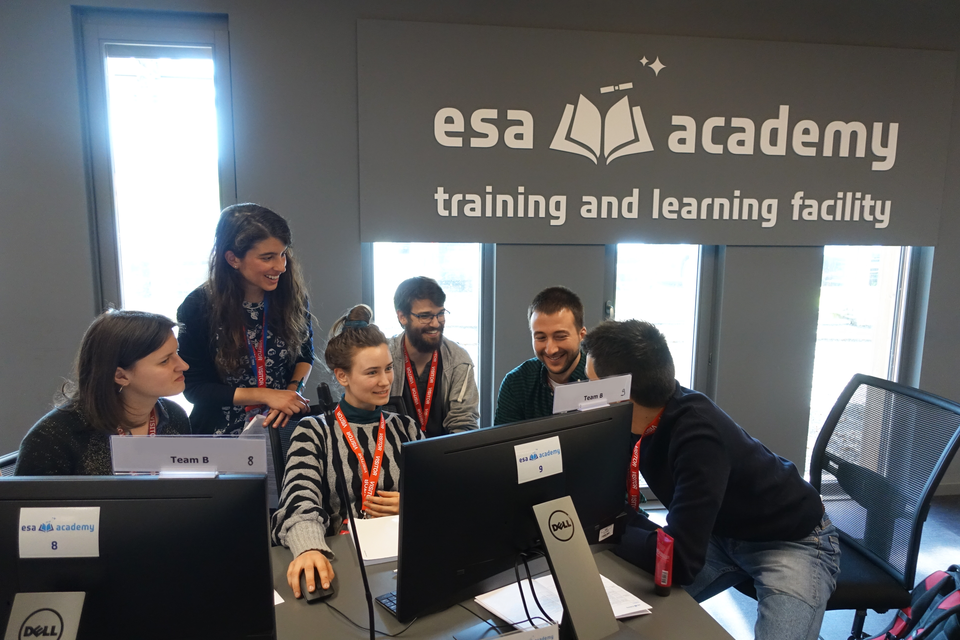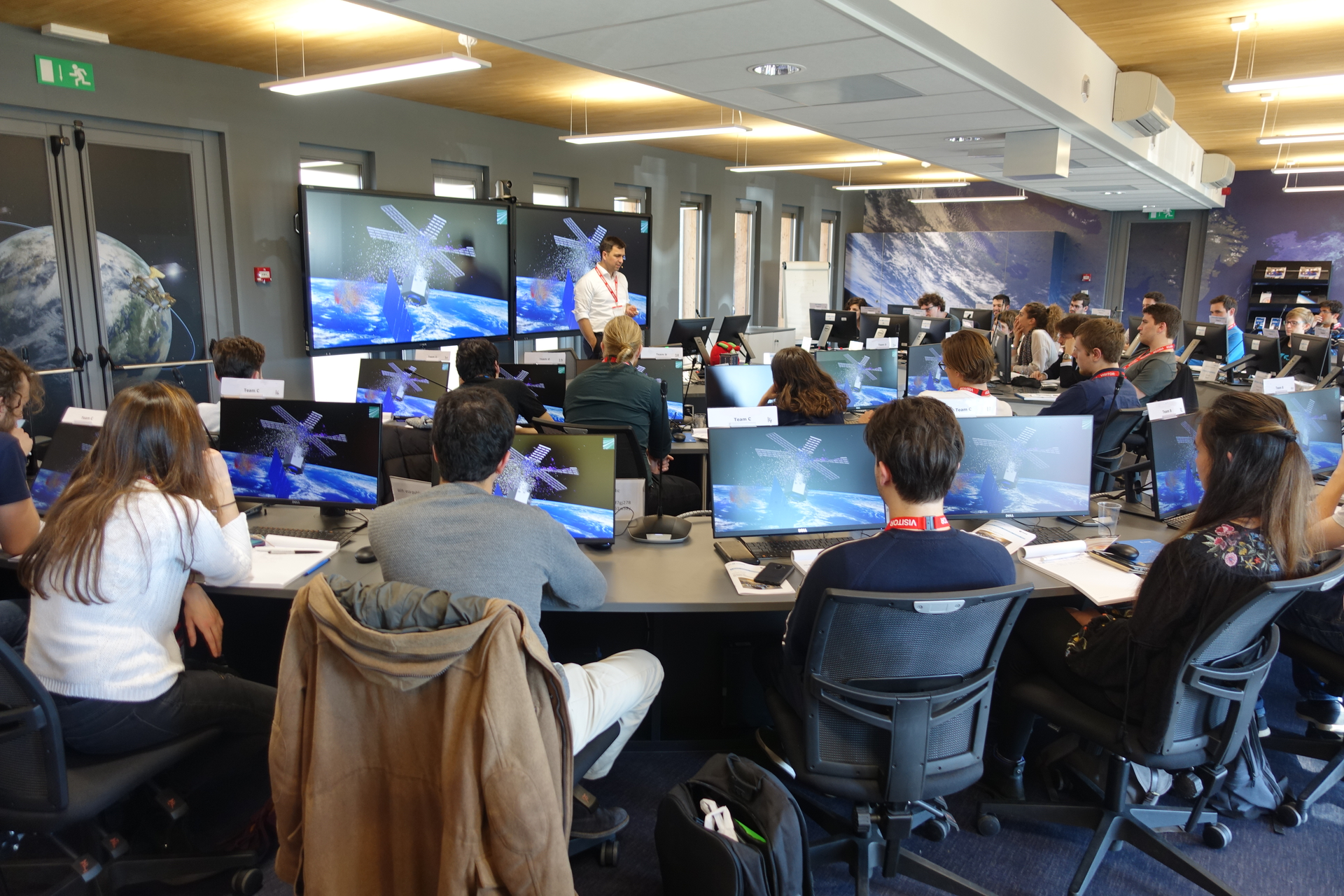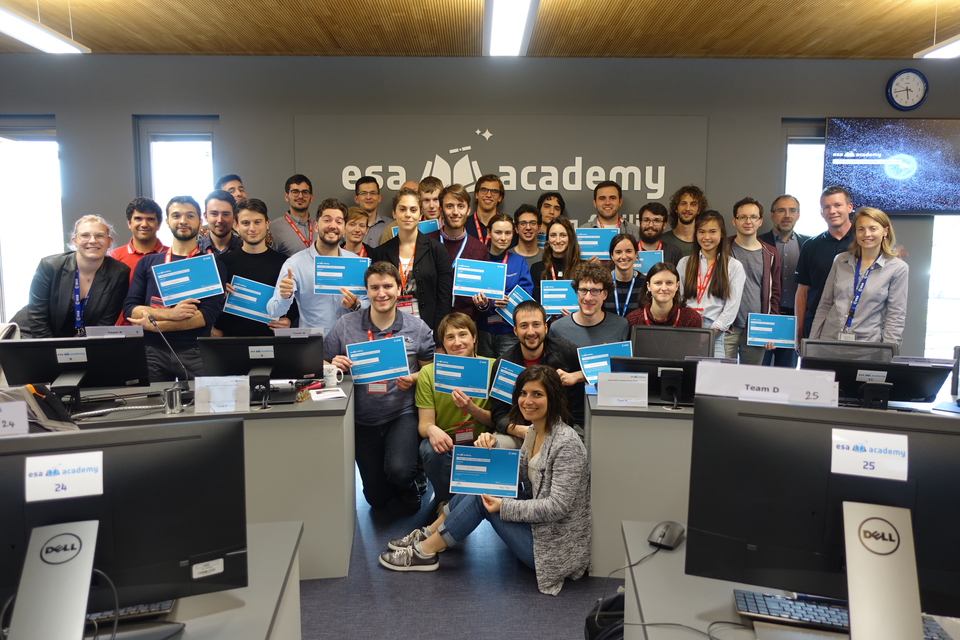Space Debris Training Course 2019 prepares university students for future challenges
Space debris poses a serious threat to our satellites in orbit, and is a problem that is only set to get worse. To help tackle the challenge, ESA’s Education and Space Debris Offices are training the next generation of space scientists and engineers, thanks to the Space Debris Training Course 2019, which was held from 12 to 17 May 2019 at ESA Academy’s Training and Learning Facility, ESEC-Galaxia, Belgium. Attending were 30 university students from 14 different ESA Member States, as well as 16 online students, following the course via Livestream.
The primary goal was to give the students an introduction to the concept of space debris, why it is a problem today, and what can be done about it. Content was delivered through technical lectures given by ESA and external expertsin the field. Complementing these was a group project in which the students were divided into teams, each with a different mission profile. Tasks included making their satellite design and operations concept compliant with the Space Debris Mitigation Guidelines; addressing for example collision avoidance; shielding the satellite, exploring risk-minimising re-entry strategies; and finally performing the active removal of their satellite from orbit. To aid their efforts, the students had the opportunity to use ESA’s DRAMA and MASTER software, developed and routinely used by ESA’s Space Debris Office, as well as PIRAT, developed by Fraunhofer EMI, for shielding computation.

“A beautiful aspect of this experience was to collaborate with other colleagues, with different backgrounds, in a hypothetical space mission,” said an Italian student from the Università di Padova. “In order to do this in the best way, we used different software and applied the knowledge transmitted by experts, who have always been available to help us and to answer all our questions. I would like to recommend to all those who, like me, love space, to believe in themselves and try to participate in one of the training courses offered by ESA Academy.”
Each day of the workshop, the students focused on different aspects of the space debris problem. To begin with, students were introduced to the topic of space debris. The forces acting on a space object were discussed, followed by an overview of the space debris environment, what it contains and how it evolves, and the related dangers posed by space debris.
Day two was dedicated to space debris mitigation, addressing topics ranging from the legal and regulatory aspects of the problem to technologies for passivation and deorbiting, incorporating the mitigation context and why it is important. The third day was all about Operations and space surveillance, actually showcasing how space debris influences the daily use of our satellites. Re-entry was the theme of day four, starting with the aerothermodynamics ruling the re-entry of an object into the atmosphere, through to a simulation of re-entry for various satellites. The fifth and final day was given to the future of the space debris problem. Students were provided with an overview of Active Debris Removal and Design for Demise, techniques in which spacecraft are specifically designed to optimise their destruction during re-entry, preventing space debris.

The 16 university students following the course online watched live lectures, or played back recorded versions later. Thanks to a live forum, they were able to pose questions to the experts in real time. “This training course gave all of us an amazing experience, learning a lot about the space debris problem, mitigation strategies and many other very exciting ideas. Despite seeing the experts through a screen, you felt right there with them, being able to ask any question,” explained an online Spanish student from the Universidad Carlos III de Madrid.
During the week, on-site students got an added bonus: the opportunity to visit ESEC-Redu and learn more about its activities, including visiting the PROBA Control Room!
Part of each day was set aside for work on the group project, supervised by the experts. The week culminated in presentations of the students’ results, including explanations of hypotheses and decisions made. The experts were impressed by each team, and were very happy with the group’s collective performance. The students were evaluated in order to obtain a grade for their course transcript. With this document and their certificate of participation, the students will be able to claim ECTS credit(s) from their respective universities. In parallel, the online students have been evaluated by an online questionnaire in order to receive their certificate of attendance.
An online Spanish student from the Universitat Politècnica de Catalunya summarised the experience: “It has been a wonderful week and I have learned a lot about space debris. I am thankful to all the lecturers for sharing all their knowledge and the ESA Academy team for organising it. I strongly recommend the course to all space enthusiasts!”
To find more information about upcoming ESA Academy training opportunities, please check our website.
Contact: tlp@esa.int



